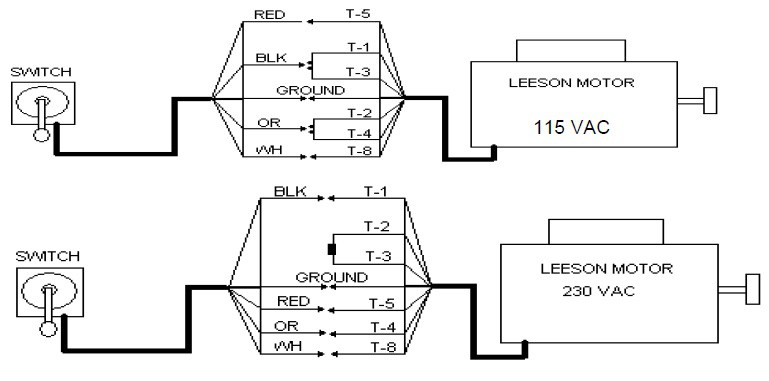Boat Lift Motors: The Ultimate Guide
Protecting your valuable watercraft is a top priority for any boat owner. Leaving a boat in the water exposes it to a range of potential hazards, from algae growth and barnacles to storm damage and fluctuating water levels. This is where a reliable boat lift becomes essential, and at the heart of every boat lift system lies the boat lift motor – the powerhouse that effortlessly raises and lowers your vessel, keeping it safe and secure.
Imagine effortlessly raising your boat out of the water after a day of fun on the lake, knowing it's protected from the elements. This convenience and peace of mind is provided by the boat hoist motor, a critical component of your boat lift system. Selecting the correct boat lift motor is crucial for the longevity of your lift and the safety of your vessel. From understanding the different types of motors available to proper installation and maintenance, this guide will delve into everything you need to know about boat lift motors.
The history of boat lift motors parallels the evolution of boating itself. As boats became larger and more complex, so too did the need for reliable lifting mechanisms. Early boat lifts relied on manual winches and pulleys, a labor-intensive process. The advent of electric motors revolutionized boat lifting, transforming it into the simple push-button operation we know today. This shift not only made boat lifting more convenient but also safer, eliminating the risks associated with manual cranking and heavy lifting.
Choosing the right boat lift motor depends on several factors, including the size and weight of your boat, the type of lift you have (such as a four-post lift, elevator lift, or sling lift), and the environmental conditions in your area. A motor that is underpowered for the lift and boat will struggle and potentially burn out prematurely, while an overpowered motor can be unnecessarily expensive and inefficient. Factors like tidal range and water current strength also influence motor selection.
One of the main issues boat owners face regarding boat lift motors is proper maintenance. Regular lubrication, inspection of electrical connections, and protection from the elements are crucial for extending the lifespan of your motor. Neglecting maintenance can lead to costly repairs or even complete motor failure, leaving your boat vulnerable in the water. Understanding the specific maintenance requirements of your particular boat lift motor is essential for avoiding these problems.
Boat lift motors can be broadly classified into AC and DC motors. AC motors are generally more powerful and suitable for larger boats and lifts, while DC motors offer greater efficiency and smoother operation, often preferred for smaller vessels. Within these categories, there are further distinctions based on horsepower, voltage, and other features.
Benefits of a Properly Functioning Boat Lift Motor:
1. Protection from Marine Growth: Keeping your boat out of the water minimizes exposure to barnacles, algae, and other organisms that can damage the hull and affect performance.
2. Reduced Maintenance: Less time spent cleaning and scraping marine growth translates to more time enjoying your boat.
3. Enhanced Security: Storing your boat on a lift deters theft and vandalism.
Checklist for Maintaining Your Boat Lift Motor:
- Check wiring and connections for corrosion.
- Lubricate moving parts according to manufacturer's instructions.
- Inspect the lift structure for damage or wear.
- Test the motor regularly to ensure smooth operation.
Advantages and Disadvantages of Different Boat Lift Motor Types
| Motor Type | Advantages | Disadvantages |
|---|---|---|
| AC Motor | Powerful, suitable for large boats | Can be less efficient than DC motors |
| DC Motor | Efficient, smooth operation | Generally less powerful than AC motors |
Best Practices for Implementing a Boat Lift Motor:
1. Choose the correct motor size based on boat weight and lift type.
2. Ensure proper installation by a qualified professional.
3. Follow manufacturer's recommendations for maintenance.
4. Protect the motor from the elements with a cover.
5. Regularly inspect the motor and lift system for any signs of wear or damage.
Frequently Asked Questions about Boat Lift Motors:
1. How often should I lubricate my boat lift motor?
2. What type of motor is best for my boat size?
3. How do I troubleshoot a malfunctioning boat lift motor?
4. What are the signs of a failing boat lift motor?
5. How much does a boat lift motor cost?
6. Can I install a boat lift motor myself?
7. What are the different types of boat lift motors available?
8. How do I choose the right boat hoist motor for my lift?
In conclusion, the boat lift motor is the unsung hero of waterfront living, ensuring the safety and longevity of your valuable investment. Choosing the right motor, coupled with proper installation and diligent maintenance, will provide years of trouble-free operation. Understanding the intricacies of boat lift motors empowers boat owners to make informed decisions, protect their vessels, and enjoy countless hours on the water without worrying about the well-being of their boat. By taking the time to research and understand the needs of your specific boat and lift, you can ensure smooth sailing for years to come. Invest in the right boat lift motor, and enjoy the peace of mind that comes with knowing your boat is safe, secure, and ready for your next adventure.
Conquering cabin fever the dometic marine ac solution
Ea fc 24 pro clubs cross platform play
Decoding the art of the flirt lines guys can actually use














